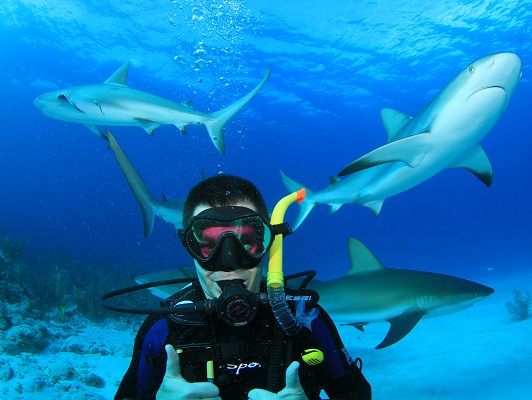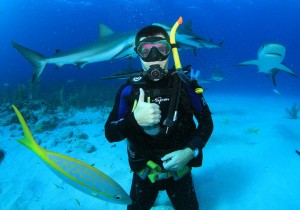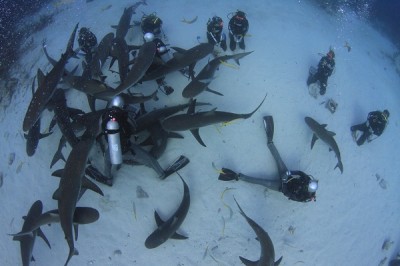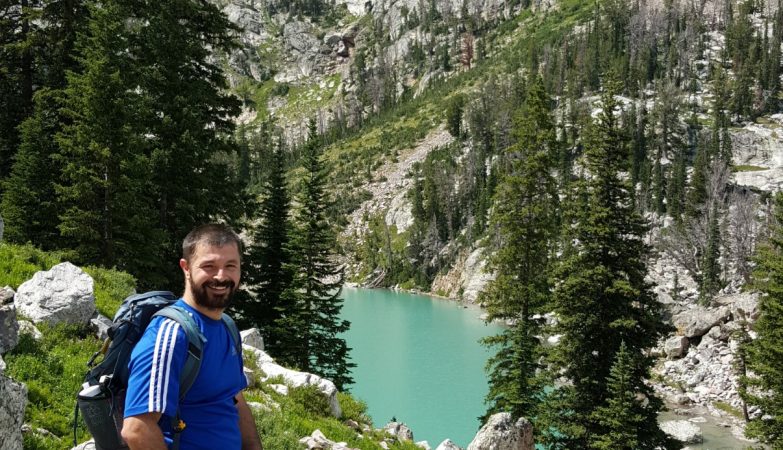Blue is a recurrent color in my photography, a color I have always felt drawn to, therefore it’s no wonder that I feel a special connection with the ocean. In the past years this has developed into a passion for scuba diving, pushing me to dive in different locations and achieve various certifications, the latest of which being the PADI Rescue Diver. Add to that a loved for big animals and this is how this story began…
“You’re underwater and you see the thing that you were taught your whole life to fear and it doesn’t want to hurt you and it’s the most beautiful thing you’ve ever seen.” These words pronounced by filmmaker Rob Stewart remained impressed in me ever since watching his documentary Sharkwater and I became somewhat of a shark advocate. Then, after reading in the pages of a diving magazine about the opportunity to dive with sharks in the waters of the Bahamas I remember feeling very excited at the idea and started looking for an opportunity to do it. Two weeks ago the opportunity presented itself under the form of an email from Royal Caribbean with some cruise specials I couldn’t pass on. After (re)packing my scuba gear and a few clothes I was off to a 4-night cruise to Nassau, Coco Cay and Key West.
A couple of times I closed my eyes and saw myself entering the water with sharks swimming all around. It didn’t quite happen that way. I glanced over the surface of the ocean near the boat and not seeing any I thought “maybe the sharks are not here yet, or maybe there aren’t that many” so I took my long stride forward and splashed into the sky-blue waters of the Atlantic. My mask on, I looked down and indeed, there were sharks everywhere. I grinned and waited for our guide to give us the signal to submerge.
We descended to about 40 feet to a sandy floor, the visibility was excellent: sharks everywhere, we stopped counting after 40. They averaged 8 to 12 feet long and 400 to 500 pounds, most of them female, which are bigger than males. We soon realized that we were not part of the food chain and relaxed, getting more and more comfortable with their presence. In fact, watching them swim so effortlessly, more like sliding or gliding, instilled in me a sense of peace. There have been a few times in my life when I have felt at peace with nature, and this was one of them (one day I’ll write about the other times). As if the sharks were just a background to an idyllic scene, we slowly swam down to 70 feet toward the edge of the wall, a place that drops to a depth of 6,500 feet and encountered many other types of marine life: from very large and curious groupers to the biggest eel I’ve ever seen (more like the size of a boa), sea turtle and the ever present lion fish (a beautiful but invasive species that now calls the Caribbean home).
We slowly ascended back to the boat with our air tanks just out of the red zone (some days I really wish I was a fish… or a shark, rather) and got briefed about our second dive: shark feeding.
“Keep you hands tucked in” was the most important warning. When feeding, sharks protect their eyes with a membrane and become therefore blind. Flailing our hands about could confuse them and make them think our hands are bait. “Sharks will be very close to you, inches away. If you are uncomfortable with that distance shake your head and we will move the bait box away.” Turns out that inches away was a bit of an understatement when I got gently slapped in the face by a 10 foot specimen, but none of us shook our heads.

With us spectators sitting in a circle, the feeding began. We were told on a typical day you’d expect about a dozen sharks, today we had nearly 50 around us. When the first bait came up rush hours started with sharks of all sizes (all large sizes) throwing themselves at it, trying to get the bite. The lucky one grabbed the bait stick and didn’t release it, taking it for a stroll before finally dropping it after several minutes. The feeding continued with sharks speeding all around us, trying to take the quickest way to the bait, which often meant bumping us in their quest to get the succulent fish. The most audacious ones even trying to get their noses and mouth inside the bait box while the feeder pushed them away. Between feeding sessions the feeder would grab a shark and rub her hand above the mouth of the animal while this would quietly stay in place enjoying the rub, not unlike a house kitten… a 500 pounds house kitten.
We returned to the boat with very little air left, trying to squeeze as much as possible out of this experience, but with a renewed respect for these beautiful and perfect creatures. This turned out to be one of my most enjoyable dives and not just for the sharks and the other marine life, the blue here has something special.
Where: New Providence, Bahamas. Stuart Cove’s diving company
How to get there: Major airlines fly to Nassau from many US Cities. Many cruises stop in Nassau for a full day. Stuart Cove will pick you up at your hotel or at the port.
When: Year round, but in the winter months for comfort I recommend wearing a 5mm wetsuit, the water of Bahamas is not always warm.
What to bring: Diver certification card (only certified divers can participate in the shark diving /feeding program); a good level of comfort underwater and around wildlife; underwater camera with a wide angle lens (better if a fisheye), if not, a GoPro2 video camera is a great and much cheaper alternative, for $299 you can take HD 1080p video and 11MP photos up to 10 fps.
What can we do to help sharks?
The most important thing we can do is becoming aware of their importance in the oceans and the risk they face. Here are some useful links:
All photos in this page taken by Stuart Cove Co.






